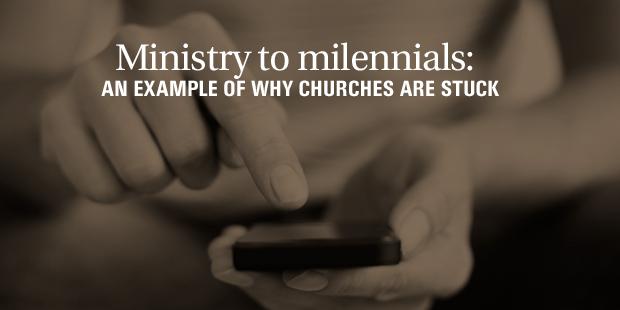
Ministry to Millennials: An Example of Why Churches are Stuck
Saw this report earlier this week from The Millennial Impact project. It identifies several trends with Millennials that should raise concerns and more conversation among church leaders. Here are some specific examples:
- About twice as many people are willing to volunteer if a peer invites them, but the church is still relying on events (like Sunday services) to encourage serving. In fact, 81 percent of Millennials prefer to be invited by a friend while only 43 percent would prefer to be invited through an event. Instead of encouraging people to tap the shoulders of their friends, we’re still relying on platform announcements and bulletin ads to fill volunteer roles.
- Far more Millennials prefer to give online, but in the church we primarily focus on giving in-person. Less than half of Millennials prefer to give in-person while 70 percent prefer online. Do you have an intentional, ongoing strategy to encourage online giving? If not, you’re probably not engaging adults ages 20 to 35.
- The number one reason Millennials have never given to a non-profit using their smartphones is because they’ve never been asked. Most churches, of course, have never even considered asking for donations using smartphones. We’re still discouraging people from using their phones in services, rather than acknowledging that most people have smartphones and tablets with them for Bible reading, giving, note taking, etc. We are still handing out paper bulletins and assuming people will write a check.
Instead of blaming young adults for not engaging in our ministries, it’s about time we start taking some responsibility. Our strategies and systems are broken. The Gospel message doesn’t need to change, but the methods we use to reach people for Jesus has to reflect our current environment.
There’s a reason why churches and denominations are in decline. We continue to be religious about using the same methods hoping and praying they’ll somehow generate different results. That’s a recipe for decline and ultimately death.
Of course, we’d rather be comfortable in our own preferences than take risks that may help us reach the next generations. And, that’s another reason why churches are stuck.

Tags: Mission, Tony Morgan, Vision Frame












